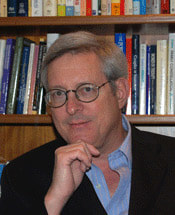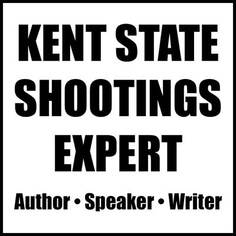|
Kent State: Death and Dissent in the Long Sixties, Thomas Grace, University of Massachusetts Press, $90 hardcover/$19.95 paperback
Above the Shots: An Oral History of the Kent State Shootings, Craig S. Simpson and Gregory S. Wilson, Kent State University Press, $28.95 67 Shots: Kent State and The End of American Innocence, Howard Means, da Capo Press, $25.99 This spring three new books will revisit the May 4, 1970 shootings at Kent State. Two of these books were written mostly for academic audiences, while the third was written by a professional author. The first study was written by Thomas Grace, a KSU alumnus who was severely wounded when an Ohio National Guard bullet shattered his left ankle, leaving him with a limp. Grace is now an adjunct professor of history at Erie Community College in College in Buffalo, NY, and the only one of the nine wounded survivors I have never met. I had plenty of opportunity, but had no desire to, after he told a friend “the only way you get justice is to pick up a gun.” It is not clear whether Grace still subscribes to that view, but his heart and mind still belong with sixties militants. His book is mostly an academic history of the Students for a Democratic Society (SDS) and antiwar protest at Kent and throughout the United States, followed by a detailed recounting of the events of 1970, which culminated with the four unnecessary deaths on May 4, 1970. Grace devotes a good 200 pages to this pre-1970 history, but never adequately explains why he joined the SDS. Nor does he try to connect the dots between the behavior of former SDSers (which, as a group, had been officially banned from campus) and the May 2 destruction of the university's ROTC building and the killings on May 4. In fact, Grace removes himself from the equation so completely that you forget he was an active participant in the protests. The Justice Department concluded that Grace, as well as Canfora, waved a flag and encouraged people to throw rocks at the Guardsmen. Grace was also close friends with Thomas "Aquinas" Miller who was involved in the arson of the ROTC building. Grace does not acknowledge what his friend did, and his portrayal of himself as an innocent bystander in all these events struck me as being disingenuous. As knowledgeable as Grace is about the events of May 4, he seems to holding back on everything he knows. His Kent State is definitely not a tell-all book. One is tempted to call it closer to what the Nixon administration used to call (during the Watergate cover-up) "a limited, modified hang-out." The second book, the bizarrely titled Above the Shots: An Oral History of the Kent State Shootings, was co-written by Craig S. Simpson, a former archivist at Kent, and Gregory S. Wilson, a history professor at the nearby University of Akron. Although the title makes it sound like these scholars were in an invisible blimp watching the action below, Simpson explains in his introduction what he really meant: "We, as authors and historians, have sought to stay above the din and present a multitude of perspectives, respecting (if not always agreeing with) the views of the narrators." The narrators in this case are mostly former students and faculty members who shared their recollections with Kent State's Oral History Project organized some 20 years after the fact. The majority of the statements were collected at least ten years after more than 8,000 pages of FBI reports and a 13,000 page trial transcript became available, making the oral history project redundant at best. The book at least publishes excerpts from some of the better narratives, while intermittently lecturing on the theories of oral history. I would say that I am not a big fan of this Weenie School of History--where historians are too afraid to weigh in on any controversy--but my wife says I should always find something positive to say about other people's hard work. So I will say this: after four and a half decades and half a dozen books published by the Kent State Press, Kent State has finally found two scholars who will at least acknowledge there was a debate. Mazel tuv, Kent State. 46 years later, you have taken another baby step! At least Howard Means, the author of the third book, 67 Shots: Kent State and the End of American Innocence, was willing to wade into that debate. His book is the 36th on what is known by shorthand as May 4 (if you count all the children's books, novels, and subdisciplinary scholarly works.) In telling the story Means, a professional author, relies extensively on the same oral histories as Simpson and Wilson. His book, however, is better written, and he does a better job distilling the collection’s few nuggets and molding them in a mostly chronological narrative. In an attempt to be fair, Means faithfully reports what all sides claimed. His book may not break any new ground, but the book's real significance is that Means is now the sixth of the eight major May 4 authors to agree that the shootings were deliberate. That in itself is a pretty damning statement against the Ohio National Guard. Finally, there is one issue that casual readers probably would not pick up on, but which actually is emblematic of the often atrocious behavior quietly taking place behind the scenes. Personally, I found it annoying that even though my own book on the shootings (Four Dead in Ohio: Was There a Conspiracy at Kent State?) clearly influenced Means (Means seconded over 20 major conclusions I reached 26 years earlier), Means refused to mention me once. (For that matter, he refused to credit all the other authors for their original reporting and research.) Both casual readers and scholars who check his source notes might jump to the wrong conclusion that everything Means reports in his book originated from Means himself. Here’s an example: on page 43 of his book, when discussing the arson of the university's ROTC building two days before the students were killed, Means reports that two previously unidentified individuals (the both now-deceased Thomas “Aquinas” Miller and George Walter Harrington, the brother of another of Grace's friends), were among those who helped set the university’s ROTC building on fire. This information–-specifically, the identities of these two arsonists--did not originate from Means' research. It was actually lifted from the first chapter of the updated e-book version of my book, which was the first book on the killings to identify the arsonists. Despite this, and the almost identical conclusions we both reached--Means never once acknowledged the existence of my book. He even excluded Four Dead in Ohio from his bibliography, while mentioning virtually all the other essential May 4 books. It was almost as if he did not want to anyone to draw comparisons between his book and mine. Just to be clear, Means does not actually plagiarize anyone; he simply makes all the previous chroniclers of the Kent State tragedy magically disappear.
3 Comments
|
AuthorThis blog is written by William A. Gordon, a Kent State alumnus and the author of "Four Dead in Ohio" and three other books. It offers commentary on the still unfolding developments in the Kent State shooting case. Archives
March 2020
Categories
All
|
|
Kent State Shooting Expert
William A. Gordon Email: [email protected] Website: www.KentStateShootingsExpert.com |

 RSS Feed
RSS Feed
